| Rye %: | 60% |
| Stages: | Sponge, Scald, Opara, Hops tea, Final dough |
| Leaven: | Rye sour culture, yeast |
| Start to Finish: | 13-15 hours |
| Hands-on Time: | 30-40 minutes |
| Yield: | One 2¼ lb./1.0 kg loaf |
This past weekend my friend Jim Crute, owner and brewmaster at the Lightning Brewery, decided to have a beer bread contest. Now, I’ve baked lots of beer rye breads, mainly from Finland, Germany and Sweden, and one of the challenges I invariably encounter is that I have virtually no control over the beer’s flavor profile, other than making my choice off the shelf. So I decided instead (since I thought it was time to start developing my own breads anyway) to take it from scratch and build a bread to my own tastes using the same ingredients brewers use: malt, hops and flavoring agents.
I settled on a Saison – a category of coriander or orange zest-spiced French farmhouse ales whose interpretation varies from brewer to brewer. My approach was to marry two breads in my collection – a hopped 65% wheat malt bread from Germany and one of my favorite Latvian breads, a 90% rye that uses multiple stages, including a yeasted scald-sponge (opara in Russian) to extract an enormous amount of flavor from its ingredients. I used three kinds of malt: a light Belgian Biscuit 18-27L for its sweetness, a slightly darker Belgian Aromatic 20L for its diastatic activity and pronounced malt flavors, and American Crystal 120L, a very dark roast that contributed pronounced coffee and chocolate notes. I also added an infusion of hops to frame the sweetness and a healthy dose of coriander for its citrus notes.
My Deconstructed Saison Rye turned out exactly the way I wanted it to, with a deep complexity and multiple layers of flavor that offered a nice balance of sweet, sour, bitter, and astringent against the sweet spiciness of the rye. I’m not going to say where I ended up in the competition; I will say, however, that people whose opinions I value described it as”comples,” “highly sophisticated,” and “not for everyone,” which is more than enough for me.
Sponge:
| Ingredient |
Grams |
Ounces |
Baker’s |
| Medium rye flour |
35 |
1.25 |
100% |
| Warm (105°F/41°C) water |
15 |
0.55 |
43% |
| Rye sour |
50 |
1.75 |
143% |
Mix the sponge ingredients by hand until incorporated into a very stiff dough, cover and ferment at room temperature (68°-72°F/20°-22°C) 3½-4 hours. The sponge will have a clean sour smell and will have doubled in volume.
Scald:
| Ingredient |
Grams |
Ounces |
Baker’s |
| Medium rye flour |
175 |
6.15 |
100% |
| Boiling water |
300 |
10.60 |
171% |
| Aromatic 20L beer malt |
40 |
1.40 |
23% |
| Coriander, ground |
8 |
0.30 |
5% |
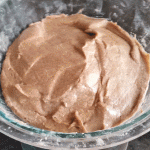 In a separate container mix the flour, water and coriander by hand into a stiff paste and let stand 4-5 minutes. Use a blender or spice grinder to grind the beer malt into a fine powder, sift to remove the husks, then stir it into the scald. Cover and place in a warm (145°-150°F/63°-65°C) oven for 3 hours. During that time, the scald will loosen considerably and become very sweet and fragrant.
In a separate container mix the flour, water and coriander by hand into a stiff paste and let stand 4-5 minutes. Use a blender or spice grinder to grind the beer malt into a fine powder, sift to remove the husks, then stir it into the scald. Cover and place in a warm (145°-150°F/63°-65°C) oven for 3 hours. During that time, the scald will loosen considerably and become very sweet and fragrant.
Opara (Yeasted Scald-Sponge):
| Ingredient | Grams |
Ounces |
Baker’s |
| White rye flour |
35 |
1.25 |
100% |
| Instant yeast |
1 |
0.05 |
3% |
| Sponge |
100 |
3.55 |
286% |
| Scald |
523 |
18.45 |
1,495% |
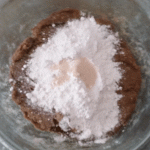 Combine the flour, yeast sponge and scald, in the mixer bowl and mix by hand until blended. Preheat the oven to 100°F/38°C, then turn it off. Cover the scald sponge and ferment in the oven, reheating to 100°F/38°C hourly, until doubled in bulk and fragrant with a sweet-sour smell, 3-5 hours. The longer the ferment, the strong the smell.
Combine the flour, yeast sponge and scald, in the mixer bowl and mix by hand until blended. Preheat the oven to 100°F/38°C, then turn it off. Cover the scald sponge and ferment in the oven, reheating to 100°F/38°C hourly, until doubled in bulk and fragrant with a sweet-sour smell, 3-5 hours. The longer the ferment, the strong the smell.
Hops Tea:
| Ingredient |
Grams |
Ounces |
Baker’s |
| Hops pellets |
3 |
0.10 |
100% |
| Boiling water |
28 |
1.00 |
933% |
Combine the hops pellets and water and let steep at room temperature 1-2 hours.
Final Dough:
| Ingredient |
Grams |
Ounces |
| White rye flour |
190 |
6.70 |
| AP flour |
210 |
7.40 |
| Biscuit 18-27L beer malt, ground |
20 |
0.70 |
| Crystal 120L beer malt, ground |
20 |
0.70 |
| Water |
75 |
2.65 |
| Salt |
15 |
0.55 |
| Hops tea |
31 |
1.10 |
| Opara |
659 |
23.25 |
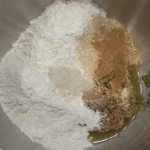 Combine the final dough ingredients in the mixer and use the dough hook to mix at low (KA2) speed until the dough comes together in a stiff mass and starts gathering around the hook, 5-6 minutes. Cover and ferment in the warm oven, reheating to 100°F/38°C hourly, until doubled in bulk, 2-3 hours
Combine the final dough ingredients in the mixer and use the dough hook to mix at low (KA2) speed until the dough comes together in a stiff mass and starts gathering around the hook, 5-6 minutes. Cover and ferment in the warm oven, reheating to 100°F/38°C hourly, until doubled in bulk, 2-3 hours
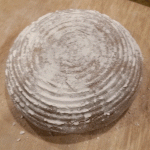 Turn the dough, which will be firm and only slightly sticky, onto a well-floured work surface, knead back to its original volume and shape into a boule. Place the boule seam side up into a floured bread form or linen-lined basket, cover and proof in the warm oven until the dough has expanded to about 1½ times its original volume and cracks appear on the surface.
Turn the dough, which will be firm and only slightly sticky, onto a well-floured work surface, knead back to its original volume and shape into a boule. Place the boule seam side up into a floured bread form or linen-lined basket, cover and proof in the warm oven until the dough has expanded to about 1½ times its original volume and cracks appear on the surface.
Preheat the oven to 535°F/280°C with the baking surface in the middle. Flip the bread onto a well-floured peel, if using a baking stone, or onto a parchment-lined sheet pan. Bake with steam 12 minutes, then remove the steam pan, lower the temperature to 410°F/210°C and bake until the loaf thumps when tapped with a finger and the internal temperature is at least 198°F/92°C, 40-45 minutes. Transfer to a rack and cool 10-12 hours before slicing.
Baker’s Percentages:
| Ingredient |
g |
% |
| TOTAL FLOUR |
725 |
100.00% |
| White rye flour |
225 |
31.03% |
| Medium rye flour |
210 |
28.97% |
| AP flour |
210 |
28.97% |
| Malted barley |
80 |
11.03% |
| Water |
418 |
57.66% |
| Salt |
15 |
2.07% |
| Instant yeast |
1 |
0.14% |
| Rye sour culture |
50 |
6.90% |
| Coriander |
8 |
1.10% |
| Hops |
3 |
0.41% |
| TOTAL FORMULA |
1,219 |
168.14% |
| Total flour prefermented |
285 |
39.31% |

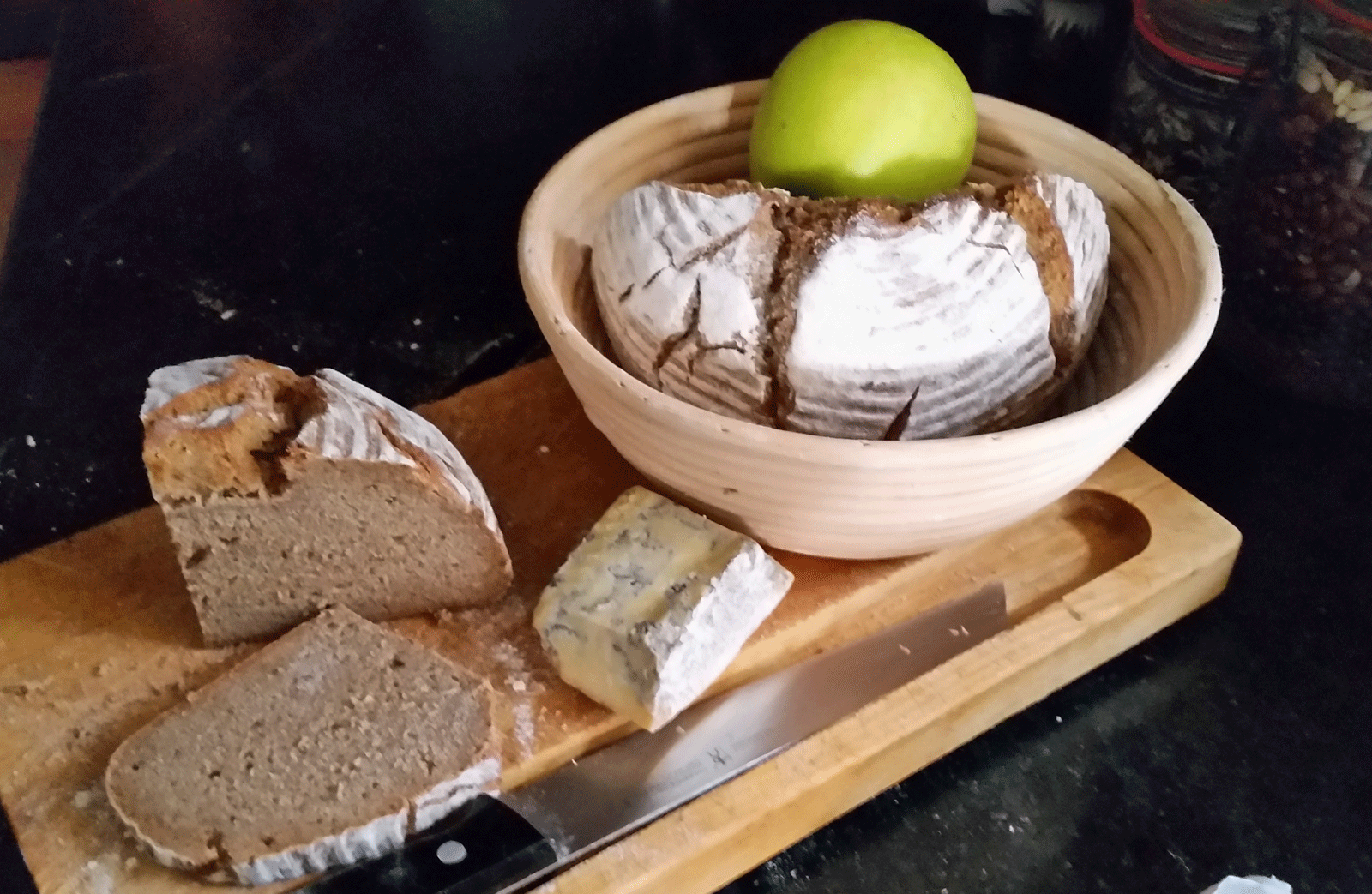
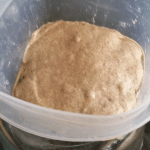
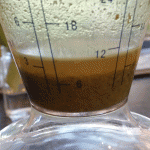
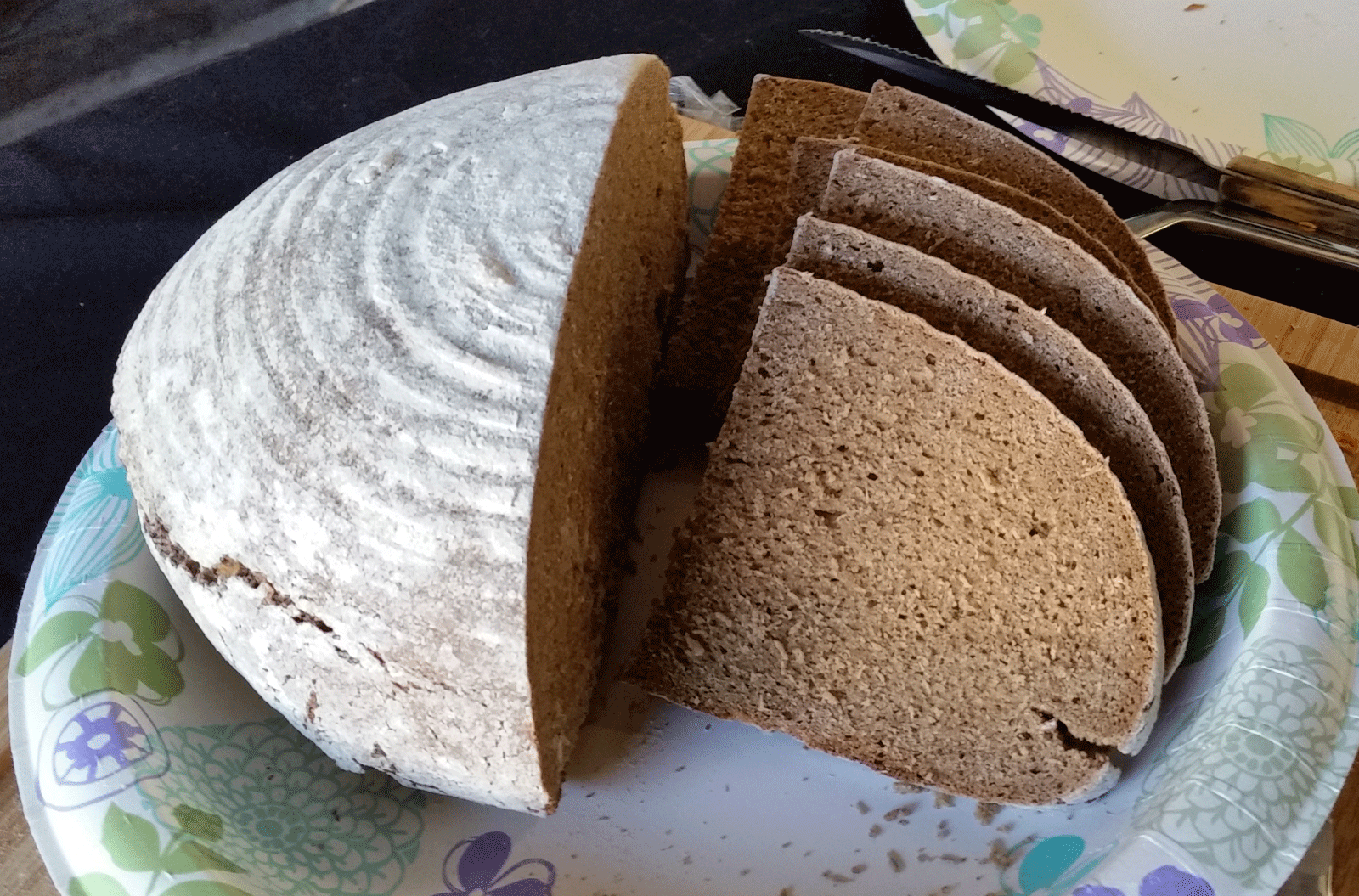
Jack
April 18, 2016some fresh roast turkey breast, a little cranberry sauce, lettuce and tomato — makes a nice sandwich!!
Stanley Ginsberg
April 18, 2016I’m with you totally, although I had mine surrounding a Reuben the other night …. also not so bad!!!!
Karin Anderson
April 20, 2016Interesting experiment! I once tried to get one of our local micro breweries to sell me some of their spent grains for bread baking, but they rather feed it to the pigs.
Stanley Ginsberg
April 20, 2016Find another brewery. My friend Jim gives it away to anyone who asks.